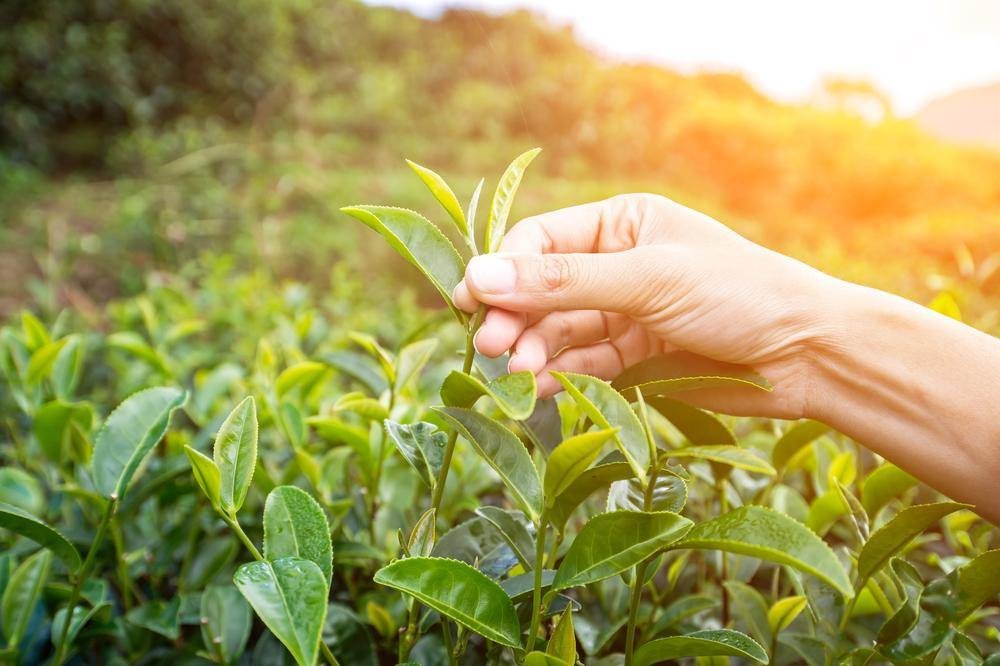TEA
The Global Journey of Terilyn Tea:
From Ancient Roots to Your Inspiring Cup
HISTORY OF TEA
Moments that inspire
More than 4,000 years ago, tea was discovered in the misty hills of southwest China—a fateful moment that forever changed the world. Legend says Emperor Shen Nong stumbled upon it in 2737 BCE, when wild leaves drifted into his boiling water, creating an aromatic and invigorating brew. That single cup sparked a global tea journey, shaping cultures for millennia and igniting moments that inspire across generations.
Ancient Roots:
The Birth of Tea Culture in China
By the Tang Dynasty (618–907), tea had transformed from a medicinal tonic into a refined cultural staple. It infused daily life, art, and philosophy. From whisked green teas to compressed brick tea and the earliest ceremonial preparations, Chinese tea culture laid the profound foundation for its global journey.
THE HISTORY OF TEA


Spreading East:
Tea Across Asia's Spiritual & Ceremonial Landscape
Tea’s journey continued eastward, carried by Buddhist monks, zealous merchants, and curious emperors. In the 9th century, Buddhist monks brought tea to Japan, where it found a spiritual home in Chanoyu. The Japanese tea ceremony is revered for its meditative grace and ritual precision.
Tea became a scholarly and dignified symbol in Korea, celebrated in royal courts and monastic circles. Meanwhile, Vietnam, Thailand, and Myanmar developed unique, hyperlocal traditions using their native tea plants. Each culture added new layers of meaning, artistry, and inspiration to the world of tea.
The Silk Road & Beyond:
Tea Travels West
By the 8th century, the legendary Silk Road carried tea from China to Central Asia and the Middle East. Turkish traders brought çay to Istanbul, where it became a symbol of hospitality.
In Russia, tea arrived via arduous overland caravans from China through Siberia, giving rise to the iconic samovar and a culture of leisurely, robust black tea served with lemon or jam. Across North Africa, Morocco’s mint tea ritual became a cornerstone of social life and welcome.
Tea also traveled to the Tibetan Plateau, where butter tea became a staple for monks and nomads enduring harsh mountain climates. In Mongolia, brick tea was dissolved into hearty soups and ceremonial drinks, highlighting tea’s adaptive presence across cultures.
THE HISTORY OF TEA


Spreading East:
Tea Across Asia's Spiritual & Ceremonial Landscape
Tea’s journey continued eastward, carried by Buddhist monks, zealous merchants, and curious emperors. In the 9th century, Buddhist monks brought tea to Japan, where it found a spiritual home in Chanoyu. The Japanese tea ceremony is revered for its meditative grace and ritual precision.
Tea became a scholarly and dignified symbol in Korea, celebrated in royal courts and monastic circles. Meanwhile, Vietnam, Thailand, and Myanmar developed unique, hyperlocal traditions using their native tea plants. Each culture added new layers of meaning, artistry, and inspiration to the world of tea.
Europe Discovers Tea: From Luxury to
Revolution
In the 16th and 17th centuries, Portuguese and Dutch traders
introduced tea to Europe, where it quickly became a luxury embraced by elites.
Amsterdam, Paris, and London were captivated by its exotic appeal.
Tea exploded in popularity in Britain, moving from
aristocratic salons to bustling coffeehouses by the mid-1600s. By the 1800s,
tea was deeply ingrained in daily life, shaping everything from afternoon tea
to the British Empire trade.
The Boston
Tea Party & the Fall of a Tea Empire
In 1773, American colonists, angered by taxation without
representation—rebelled by boarding British ships and dumping 342 chests of tea
into Boston Harbor. The Boston Tea Party was more than a protest; it became a
spark for the American Revolution and a global symbol of defiance.
This watershed moment also marked the beginning of the end
for the British East India Company. Once a dominant force in the global tea
trade, the company’s exploitative practices, particularly in India, became
unsustainable. As revolutions brewed and colonial power structures began to
shift, the fall of the East India Company reshaped the global tea trade and
paved the way for new, more equitable supply systems.
Today, this revolutionary spirit lives on through brands
like Terilyn Tea, committed to
sustainability, transparency, and the empowerment of tea-growing communities.
India’s Tea
Renaissance: From Cultivation to Global Powerhouse
As Britain’s thirst for tea grew, the need to reduce
reliance on Chinese imports led to the establishment of vast plantations in
India during the 19th century. With ideal growing conditions in Assam,
Darjeeling, and Nilgiri, India quickly became a cornerstone of the global tea
industry.
Indian black teas—bold, brisk, and malty—gained
international fame and became the foundation for many of today’s favorite
blends. These thriving plantations gave birth to some of the world’s most
iconic tea profiles and contributed significantly to the economic and cultural
landscape of the country.
Today, India stands as one of the largest tea producers
globally, with its teas representing a blend of tradition, terroir, and
transformation. For TZB, this legacy is deeply personal—our roots in India
inspire everything we do, and our Terilyn Tea collection is a tribute to this
rich heritage.
Tea in Sri
Lanka and Indonesia: Colonial Cultivation and Global Impact
Sri Lanka, formerly Ceylon, became a tea giant under British
colonial rule, transitioning from coffee to tea cultivation after its coffee
crops were devastated by disease. The
country’s high-altitude estates produced golden, brisk Ceylon teas—now staples
in breakfast blends worldwide.
Dutch colonialists cultivated Java and Sumatra in Indonesia
as centers of Orthodox and CTC tea production. Today, Indonesian teas are
appreciated for their smooth, earthy profiles and remain part of the global
export landscape.
Across the
Atlantic: Tea in the Americas
Tea’s journey to the Americas began as a staple in colonial
life and evolved into a symbol of protest. The 1773 Boston Tea Party cemented
tea’s role as both a cherished beverage and a catalyst for revolution. Today,
North and South America embrace tea in diverse ways—from sweet iced tea
traditions in the American South to a burgeoning specialty tea scene across the
continent.
Argentina has also emerged as a notable producer of black
tea for export, especially for iced tea consumption in the United States. Its
plantations in Misiones are key contributors to the global market.
Africa’s
Tea Renaissance: Kenya and Beyond
Tea cultivation reached Africa in the early 20th century.
With its ideal climate and elevation, Kenya quickly developed into a powerhouse
of black tea production. The establishment of the Kenya Tea Development Agency
in 1960 empowered thousands of smallholder farmers, transforming the nation
into one of the world’s leading tea exporters.
Today, Kenyan teas are prized for their brisk, vibrant
character and rich aroma, qualities that define many Terilyn Tea blends.
A Global
Harvest, a Shared Legacy
From Emperor Shen Nong’s accidental brew to Japanese matcha
bowls, Moroccan mint rituals to British afternoon tea, and from the lush
valleys of Assam to the highlands of Kenya, tea is more than a drink. It’s a
cultural connector. It soothes, energizes, unites, and inspires Moments that
inspire across continents and generations.
At TZB Private Limited, we honor this profound global
tradition through our Terilyn Tea collection. We source from the world’s most
revered tea gardens, ensuring every sip is a tribute to centuries of heritage,
global craftsmanship, and a celebration of your present moment.
Curious to explore more unique tea traditions from around
the world? Visit our Blog Page for
deeper stories, cultural insights, and steeped legends that continue to
inspire.